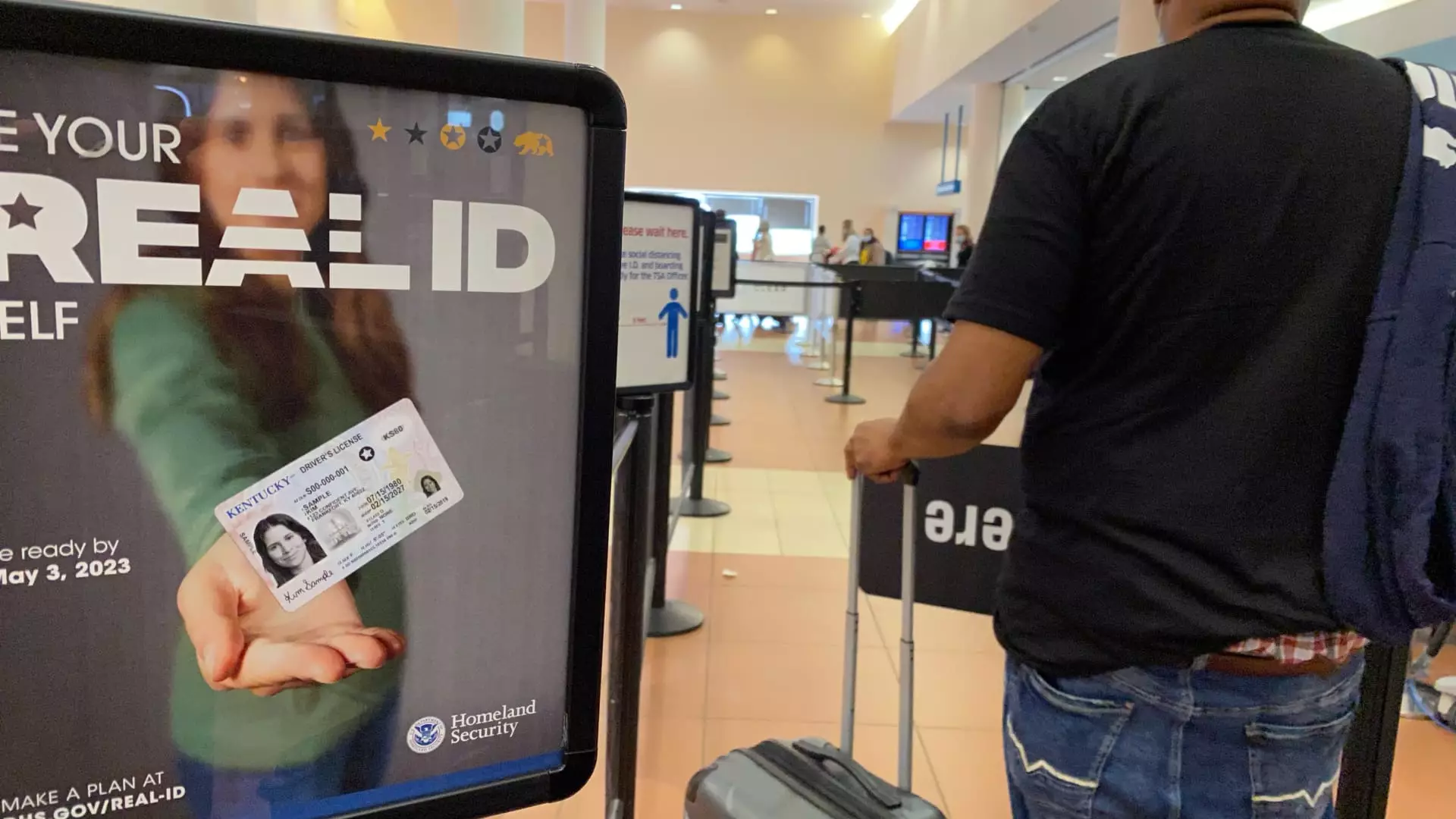As the deadline of May 7 approaches, it’s difficult to ignore the impending chaos facing American travelers. The federal government’s insistence on enforcing Real ID requirements truly feels like a double-edged sword. While it’s marketed as a means of strengthening national security post-9/11, the reality is much more complicated. Travelers are left scrambling to secure compliant identification amidst rumors of potential chaos at airport checkpoints. This heavy-handed approach from the government disregards the everyday realities of individuals who may not have the time or resources to navigate the convoluted process of obtaining a Real ID.
The Transportation Security Administration (TSA) claims that around 81% of travelers already possess a Real ID-compliant form of ID, yet this statistic glosses over the disparities between states and fails to address the gray areas related to identification. The urgency being communicated by officials like John Essig from the TSA should not merely be seen as a friendly reminder; it’s a clarion call underscoring a bureaucracy that doesn’t seem to care if travelers face long lines or missed flights because of its rigid policies.
Breaking Down the Barriers: Accessibility Issues
While the TSA encourages people to update their licenses, the availability of appointments at state motor vehicle departments is limited, offering yet another obstacle for the average citizen. For many, the process can be time-consuming, expensive, and frustrating. Not everyone can easily take time off work to get a new ID, nor can everyone afford to navigate the various forms of identification permissible under the law. The government should ensure that obtaining a Real ID isn’t an exercise in futility, but instead, their inaction speaks volumes about a system that frequently fails to consider the common citizen.
Additionally, the proliferation of advertising and reminders about the Real ID program may leave some feeling overwhelmed. Who among us has not experienced “information overload,” where messages become background noise rather than effective communication? This cacophony of poorly timed reminders may reflect an agency that is more interested in public relations than genuine accessibility.
The Question of Genuine Security versus Political Theatre
The ultimate aim of these identity verification measures is to bolster national security. However, the efficacy and necessity of a Real ID remain questionable. To suggest that a plastic card can effectively prevent terrorists from boarding planes is a simplistic, almost farcical, notion. Those bent on causing harm have often deployed more complex strategies that easily bypass straightforward identification checks. In this era of advanced technology, fingerprinting, biometrics, and facial recognition stand as more palpable alternatives. Clinging to the Real ID model smacks of political theatre rather than genuine security measures.
Furthermore, given the history of the Real ID Act—initially passed in 2005 but encountering numerous delays—it feels like a hasty response to waves of unsophisticated bureaucratic panic rather than an innovative solution. The inability to roll this out in a timely manner lessens its credibility as a tool of national security. Americans should not be made to feel insecure or anxious about travel simply because of a poorly implemented plan.
Real ID: A Reflection of Broader Problems in Governance
The essential problems with the Real ID program reflect broader issues within our governing bodies, indicating a disconnect between policy creation and the lived experiences of citizens. Passengers not only face the potential for identification-related delays but also the looming threat of humiliation at checkpoints. It’s outrageous that citizens are left at the mercy of an ever-complex identification network, as government agencies push for compliance while failing to consider the human aspect of their policies.
As we near the enforced deadline, it’s vital to assess the priorities of a system that demands identification while doing little to make this process user-friendly. The hues of negligence in how the government handles this matter are especially disheartening. While it’s certainly important to bolster airport security, the Real ID requirements come at a cost—a cost borne disproportionately by those who may not have the means or time to comply.

